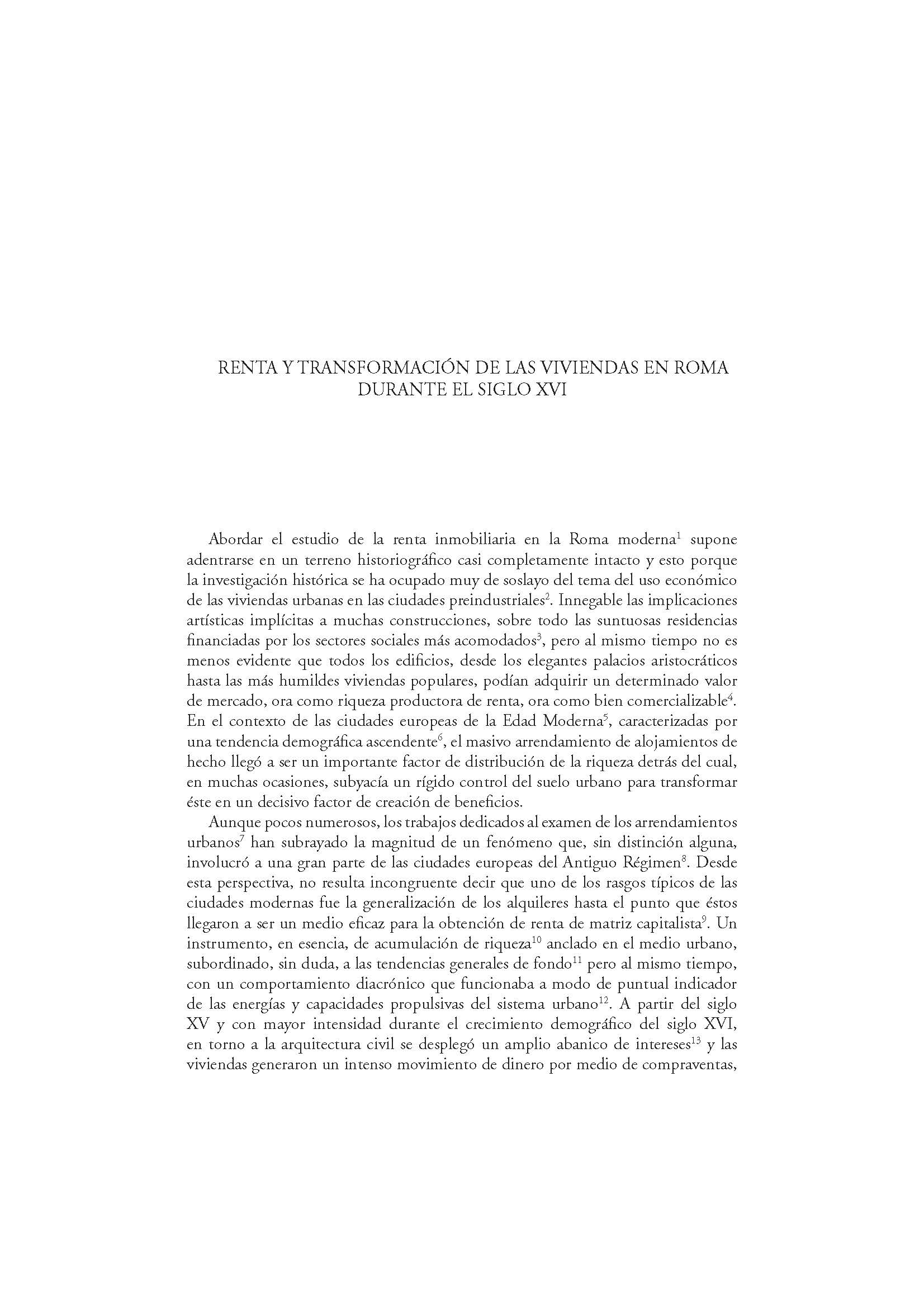Renta y transformación de las viviendas en Roma durante el siglo XVI
6,00 €
During the sixteenth century demographic growth fostered the city’s physical transformation. The increase in population and wealth sparked a great demand for housing and work places and, consequently, a signifi cant mutation in the urban fabric: new areas were built and those pre-existing became more densely populated. Within this process of architectural transformation, particularly dynamic in the States’ capitals, the principal land and real estate owners, the ecclesiastic institutions, played a primary role. They were forced to recognize and adapt to the process of urbanization. An example of this can be seen in the church of San Giacomo degli Spagnoli’s choice to make a large fi nancial commitment for restoration work intended as an investment capable of increasing income as a response to the growing value of the Roman real estate market.
During the sixteenth century demographic growth fostered the city’s physical transformation. The increase in population and wealth sparked a great demand for housing and work places and, consequently, a signifi cant mutation in the urban fabric: new areas were built and those pre-existing became more densely populated. Within this process of architectural transformation, particularly dynamic in the States’ capitals, the principal land and real estate owners, the ecclesiastic institutions, played a primary role. They were forced to recognize and adapt to the process of urbanization. An example of this can be seen in the church of San Giacomo degli Spagnoli’s choice to make a large fi nancial commitment for restoration work intended as an investment capable of increasing income as a response to the growing value of the Roman real estate market.

